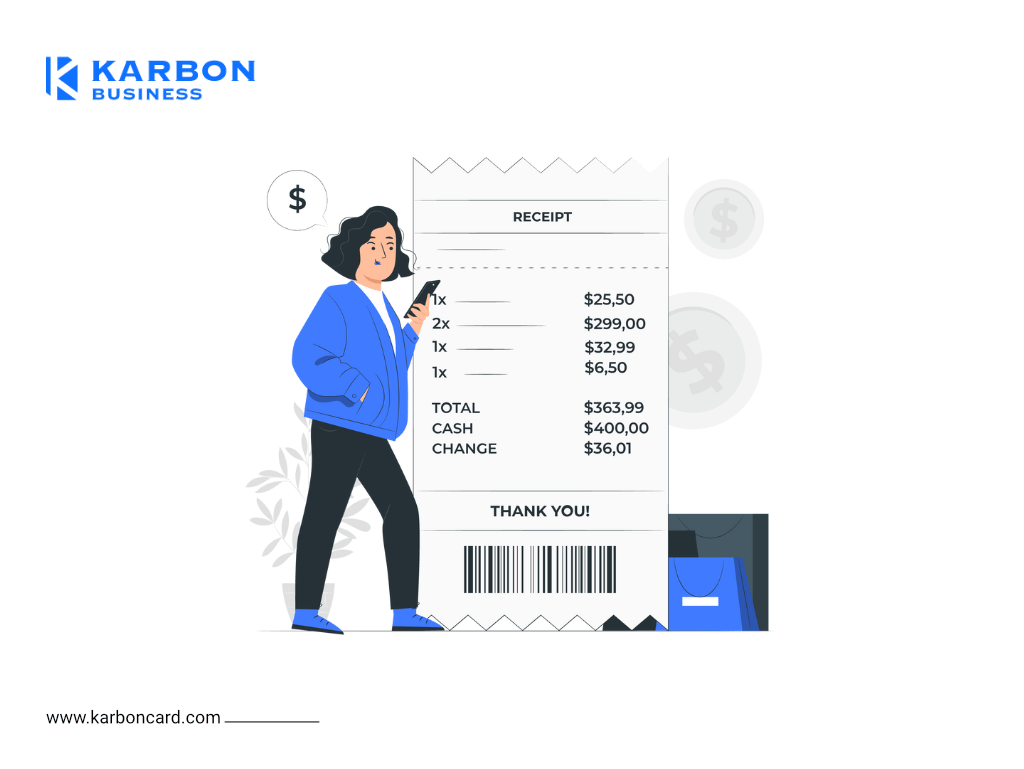Key takeaways
- The biggest leak is not the visible 4.4% fee, it is the FX conversion spread, the real pain behind hidden charges in PayPal India.
- Always compare your payout rate with the mid market rate, the gap is your FX markup, a cost most freelancers never see.
- A $2,000 invoice can lose 7% or more after stacked fees and FX spread, your INR shortfall adds up quickly.
- Use a simple calculator method to compute FX markup every month, or try an effective rate calculator to track the true cost.
- Prefer providers that use mid market conversion with transparent fees, compare options like Karbon Business, Wise, and Skydo.
- Automate compliance, ensure e-FIRA is issued on every remittance, keep documents ready for tax season.
- Educate clients, price in the fees if PayPal is mandatory, or shift them to ACH, SEPA, or a mid market platform.
The sting of hidden fees, Priya’s ₹4,640 lesson
Priya, a Pune based designer, expected ₹1,66,000 on a $2,000 invoice. She received ₹1,61,360. The missing ₹4,640 sat quietly inside the exchange rate, not on the fee line.
It is not the fee you see, it is the FX you do not.
The visible charges look simple, yet the real cost hides in the conversion. If you have felt this gap, you are far from alone. Reviews and breakdowns consistently show the FX spread as the major driver of loss, see this PayPal India charges review and alternatives and this independent PayPal review. For a broader context on whether the platform still fits Indian users, read will PayPal work in India.
Understanding the real cost, beyond the visible fee
Visible fees are easy to spot, PayPal India lists 4.4% plus a small fixed fee. You will see these in your activity logs.
Hidden fees sit inside the exchange rate. Providers rarely convert at the mid market rate, they use a house rate, usually 3 to 4% worse than you see on Xe or Google. That difference is the FX markup. For deeper comparisons, skim a PayPal India charges review and this PayPal review, or weigh options in Payoneer vs PayPal for Indian businesses.
What is the mid market rate and why it matters
The mid market rate is the real, unbiased rate between banks, it is the midpoint of buy and sell. When you see USD to INR on search engines, that is the mid market benchmark. If a provider shows ₹80.68 while the mid market is ₹83.00, the ₹2.32 difference per dollar is your FX markup. You can cross check assumptions in a PayPal India alternatives review, a concise PayPal review, and this deep dive on Payoneer vs PayPal.
FX markup meaning India, the hidden tax on your earnings
FX markup is the percentage gap between the mid market rate and the rate you actually get. Many Indian accounts see 2.8% to 4% markup depending on the corridor. Since Indian PayPal balances auto withdraw to INR, you cannot hold USD, EUR, or GBP to time the market. For more context, see this India charges review, this platform review, and a broader take on whether PayPal works for India.
If you earn $5,000 each month, a 3% FX markup at ₹83 equals roughly ₹12,450 lost monthly, nearly ₹1,50,000 a year, without adding visible fees.
Where hidden charges in PayPal India actually hide
- Currency conversion spread, the largest bite, when the rate is 3 to 4% below mid market. See breakdowns in this charges review, this review, and this guide on PayPal for India.
- Stacked fees, the 4.4% fee plus fixed charge on top of the FX spread, often pushing the total cost to 7 or 8%. Cross compare with alternatives, the PayPal review, and Payoneer vs PayPal.
- Auto withdrawal to INR, conversion is forced at the provider’s rate, no timing advantage.
- Double conversion traps, for example EUR card pays into a GBP base, then settled to INR, two conversions, two spreads. See comparison notes in this Payoneer vs PayPal guide.
- Timing slippage, rate locks lag the live market, movements can reduce your realized INR.
Worked example, how much you actually lose
Scenario: $2,000 invoice, mid market is ₹83.00, PayPal rate is ₹80.68.
Step 1, FX markup loss: Gap is ₹2.32 per dollar. On $2,000, you lose ₹4,640 purely to the spread. Sources, a charges review and an independent PayPal review.
Step 2, visible fees: 4.4% of $2,000 equals $88, around ₹7,304 at mid market. Add the fixed fee, about ₹25. Total visible fees, ₹7,329. See fee references in this review and this review.
Step 3, total shortfall: FX loss ₹4,640 plus visible fees ₹7,329 equals ₹11,969. You expected ₹1,66,000, you receive roughly ₹1,54,031, a 7.2% hit. Benchmarks, see PayPal review and Payoneer vs PayPal.
Calculate your true FX cost, a five step markup calculator
- Check the mid market rate at that moment.
- Note the INR payout amount and the provider’s applied rate.
- Compute FX markup, (mid market minus provider rate) divided by mid market. Example, (83 minus 80.68) divided by 83 equals 2.8%. Try this effective rate calculator for quick math.
- Add the visible fee percentage to the FX markup to get total cost.
- Multiply your invoice amount by mid market, then by the total cost percentage, this is your INR shortfall.
Repeat monthly, patterns will emerge. For more context and comparisons, see this charges review, this platform review, and Payoneer vs PayPal.
Practical tactics to avoid hidden forex charges in India
- Rate check discipline, compare every payout against mid market and flag gaps above 1%.
- Reduce unnecessary conversions, invoice in your client’s native currency, and ensure only one conversion happens end to end, more details in this comparison.
- Prefer zero FX markup providers, evaluate platforms that use mid market with a clear fee, see an alternatives review.
- Currency holding and timing, where compliance allows, hold USD, GBP, or EUR briefly and convert on favorable days. PayPal India forces auto INR withdrawal, which removes this lever, more notes in this guide.
- Pricing hygiene, add a visible line for processing and FX costs, revisit pricing quarterly, nudge clients toward lower cost rails.
- Comparison by payment type, for small card payments, spreads are high, avoid if you can for sub $100 invoices. For local bank transfers, ACH, SEPA, FPS, costs fall when the provider uses mid market rates, see this playbook on how to negotiate client payment method. For large B2B invoices, SWIFT can be fine, track intermediary fees and the FX margin.
Checklist, a five minute monthly audit to catch hidden spreads
- Pull your last three payouts, compute markup against mid market for each.
- List the visible fees, calculate the effective total percentage cost.
- Identify double conversions, remove extra currency hops.
- Set a threshold, if your effective cost tops 2%, route the next invoice elsewhere.
- Test two alternatives with small tickets, compare net INR side by side.
This tiny habit saves thousands every quarter.
What to look for in a cross border platform for Indian freelancers
- Mid market conversion with zero markup.
- Flat, disclosed pricing.
- Ability to hold major currencies for short periods.
- Local receiving accounts in client currencies, ACH, SEPA, FPS, CAD rails.
- Fast INR settlement, ideally within 24 to 48 hours.
- Automatic e-FIRA generation for RBI and FEMA compliance, within 24 hours.
Compare options before you switch, see this alternatives review and this detailed Payoneer vs PayPal guide.
Karbon Business offers virtual USD, GBP, EUR, and CAD accounts with local transfers, 24 to 48 hour INR settlement, automatic e-FIRA, flat 1% platform fee, zero FX markup at mid market rates, and up to 60 day currency holding, learn more at Karbon Business.
Wise Business uses mid market rates with transparent fees, multi currency accounts, INR settlement time can vary.
Payoneer provides virtual receiving accounts and marketplace integrations, rates vary by corridor.
PayPal is easy for clients, costs are higher once FX markup is included.
Skydo focuses on mid market conversion and fast compliance for Indian freelancers.
Indian specifics, FEMA, RBI compliance, and tax readiness
FEMA and RBI, ensure your provider issues e-FIRA for every inward remittance, keep certificates for tax filing and audits. Automated e-FIRA within 24 hours reduces admin friction.
Tax readiness, store fee statements and e-FIRA, only documented FX costs can be claimed as business expenses.
Client education, a simple script can shift behavior, for example, “PayPal’s conversion reduces my net by about 7%. If you can send ACH or SEPA, or pay through a mid market platform, we both save.”
Comparison snippet, PayPal route vs mid market provider
PayPal route: mid market ₹83, provider rate ₹80.68, FX loss ₹4,640, transaction fee about ₹7,304, fixed fee ₹25, net around ₹1,54,031.
Mid market provider such as Karbon Business or Wise, rate equals ₹83, flat platform fee around 1% for Karbon equals ₹1,660, net around ₹1,64,340, difference ₹10,309 per $2,000. Benchmarks from this review and this PayPal review.
Numbers vary with live rates and corridors, the pattern holds, hidden FX spread is the real cost center.
Important compliance note
Fees, spreads, and policies change often, verify on official sites before you decide. Examples here are illustrative, results depend on currency, method, market conditions, and settlement timelines.
Final thoughts, protect your bottom line
Hidden charges in PayPal India reduce your take home, the spread plus fee stack can eat 7 to 8% or more of every invoice. Run the monthly audit, compare your rate to mid market every time, educate clients, and test mid market platforms with transparent pricing and local receiving accounts.
Platforms like Karbon Business provide currency holding, zero FX markup, flat 1% fees, quick INR settlement, and automatic e-FIRA, making international payouts simpler, faster, and more predictable.
Every rupee matters. Track it, protect it, and keep more of what you earn.
Further reading, a concise charges review and alternatives, an independent PayPal review, a Payoneer vs PayPal comparison, and a reality check on PayPal in India.
FAQ
PayPal India hidden charges kya hote hain, aur unko kaise spot karu?
Primary hidden charge FX conversion markup hota hai, jo mid market rate se 3 to 4% worse hota hai. Simple method, payout ke time PayPal ka INR rate dekho, mid market se compare karo, jo gap hai, wahi hidden cost hai. For comparisons, see a PayPal India charges review and alternatives and this PayPal review.
FX markup meaning India kya hota hai, normal fee line se kaise different hai?
FX markup exchange rate ke andar hide hota hai, alag fee line me show nahi hota. Visible 4.4% alag hota hai, lekin conversion jab ₹83 ke bajay ₹80.68 pe hota hai, toh ₹2.32 per USD aap silently lose karte ho.
Mid market rate kya hota hai, aur Xe ya Google ka rate aur payout rate me difference kyun hota hai?
Mid market rate banks ka midpoint hota hai, jisme koi markup nahi hota. Providers profit ke liye is rate par markup add kar dete hain, isliye aapko lower INR per USD milta hai. See this PayPal review and will PayPal work in India.
Client sirf PayPal pe insist karta hai, hidden forex charges India avoid kaise karu?
Price me full cost include karo, visible fee plus FX markup. Invoice me “payment processing and currency conversion” line add karo. Saat me client ko educate karo, and propose ACH or SEPA, ya mid market platform. A global overview of fees is here, PayPal international transaction fees.
Kya PayPal India me USD hold kar sakta hoon, taaki better rate pe convert karu?
Nahi, Indian accounts me auto withdrawal to INR mandatory hota hai. Aap meaningful period ke liye USD, EUR, GBP hold nahi kar sakte, timing advantage chala jata hai.
Monthly FX loss exactly calculate kaise karu, koi simple formula hai?
Haan, five step method use karo, mid market rate note karo, PayPal ka rate dekho, percentage gap nikalo, visible fee add karo, phir invoice value pe apply karo. Quick math ke liye try an effective rate calculator.
Kaunse providers zero FX markup dete hain, India freelancers ke liye best kaun hai?
Karbon Business, Wise, aur Skydo mid market rate use karte hain with transparent fees. Karbon Business example, virtual USD, GBP, EUR, CAD receiving, 24 to 48 hour INR settlement, e-FIRA automation, flat 1% fee, zero FX markup.
e-FIRA zaroori hai kya har international payment ke liye, use kaise manage karu?
Haan, RBI aur FEMA ke hisaab se har inward remittance ke liye FIRA required hai. Aapke provider ko e-FIRA auto issue karna chahiye, ideally 24 hours me. Tax filing aur audits ke liye yeh documents safe rakhna zaroori hai.
$2,000 invoice pe kitna loss hota hai PayPal se, koi real example doge?
Mid market ₹83 pe expected ₹1,66,000. Agar payout rate ₹80.68 ho, toh FX loss ₹4,640 hota hai, plus visible fees roughly ₹7,329, total shortfall around ₹11,969, net about ₹1,54,031. A mid market provider jaise Karbon Business pe, fee around 1% hoti hai, net INR materially higher aata hai.
Double conversion kaise hota hai, aur usse bachne ka tarika kya hai?
Example, UK client EUR card se pay karta hai, platform pehle EUR ko GBP me convert karta hai, phir INR me, do baar spread lagta hai. Solution, client ko uski native currency me invoice karo, aur aisa provider choose karo jahan single hop conversion ho.
Freelancer pricing me FX cost kaise add karun, client ko offend kiye bina?
Quote me transparent line item add karo, “payment processing and currency conversion”, ya invoice discount offer karo if client switches to ACH, SEPA, or a mid market platform. Short script share karke reason explain karo, clients usually appreciate clarity.
Karbon Business pe switch karne ka real benefit kya hoga, PayPal ke comparison me?
Karbon Business mid market conversion with zero markup, flat 1% fee, virtual local receiving accounts, 24 to 48 hour INR settlement, aur automatic e-FIRA deta hai. Typical $2,000 invoice pe, difference often ₹10,000 plus hota hai compared to a high spread route, exact amount live rates par depend karta hai.










